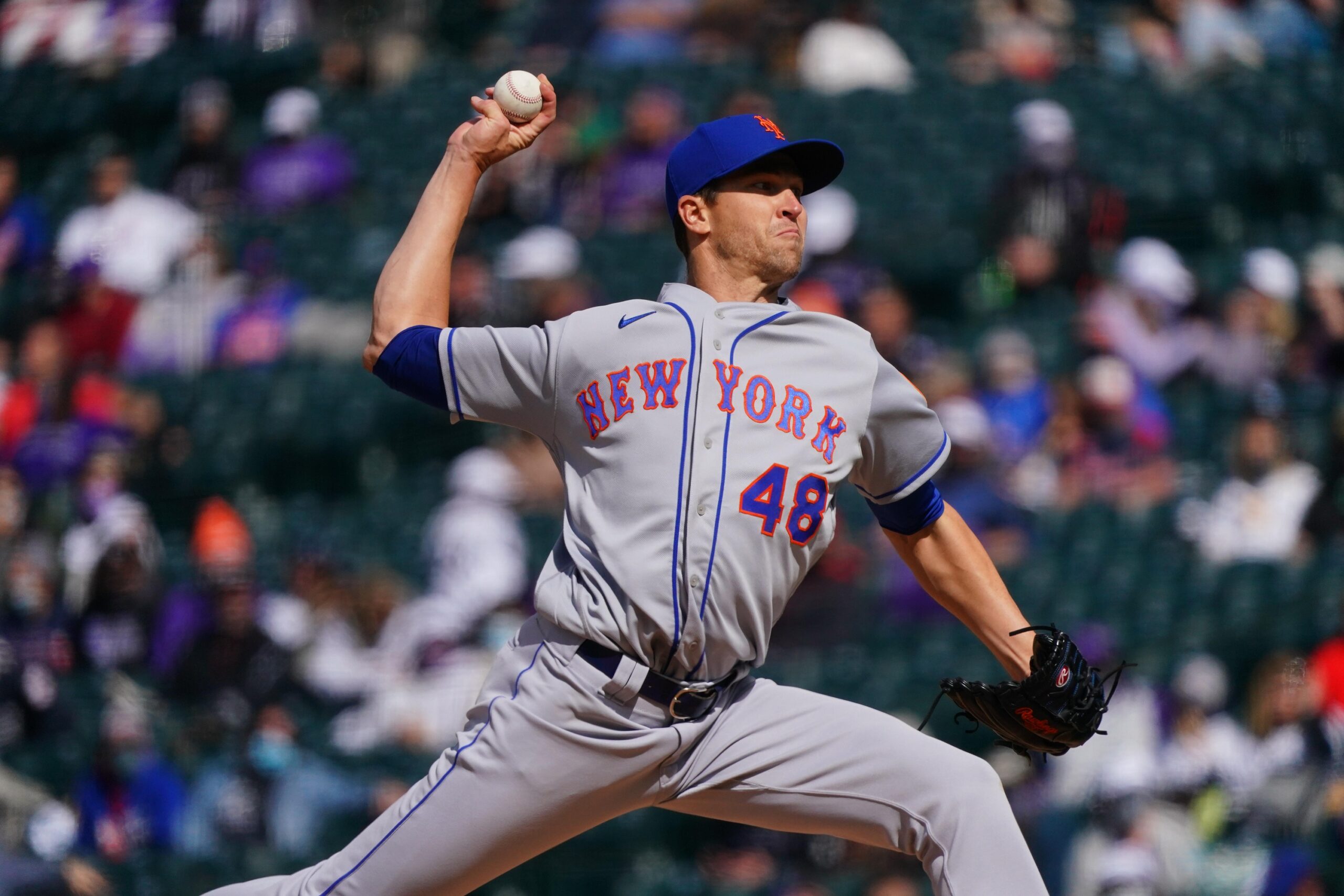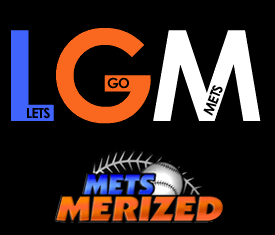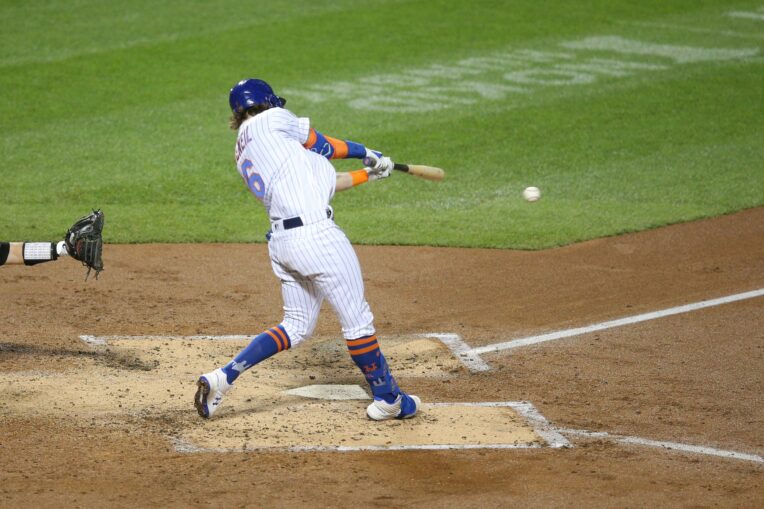
Mandatory Credit: Ron Chenoy-USA TODAY Sports
The Mets weathered yet another postponement and won two out of three against the Colorado Rockies, with all three games being played within about 24 hours of each other after a doubleheader Saturday and an afternoon game Sunday.
The offense continued to sputter, but the starting rotation kept the Mets in games (if not flat-out won games) as they held the Rockies to 11 runs across the series — the second-lowest total over a series in Denver ever.
3 Up
Marcus Stroman‘s Ground-Ball Rate
Marcus Stroman has one of the best ground-ball rates among starting pitchers in the major leagues at 60.7%, according to Statcast.
His sinker, which has been especially nasty this year with a .167 batting average on 30 batted-ball events, has produced a ground ball 70.0% of the time when a pitch is put in play.
This ground-ball rate has allowed Stroman to strand all but one of the baserunners (95.6%) he’s let on base so far this year by keeping the ball largely in the infield. (He allowed another run on a solo homer.) He also is tied for a league-high four double plays among starters and has an average launch angle of just 4.5 degrees on batted balls this year — the ninth-best mark in the majors. All of these ground balls with a solid defense behind him have resulted in a .164 batting average on balls in play.
In other words, the sinkerball pitcher who loves to pitch down in the zone is running on all cylinders so far. He’s 3-0 and sitting at a 0.90 ERA through three starts. Stroman has been what the Mets have needed and then some behind Jacob deGrom.
Michael Conforto‘s Bat
There’s nothing like playing in Denver with a massive field to work some kinks out. (I wish I could say this about the offense as a whole, but more on that later.)
Michael Conforto‘s offense trended in the right direction this series with four hits in 10 at-bats. He had three hard-hit balls and only two strikeouts. He notched his first extra-base hit of the year on Sunday, too.
His average now sits at .200 for the year, and even Conforto feels like he’s headed in the right direction. “We are getting closer to who I should be out there,” he said during a press conference after the series — the “we” being himself and his coaches helping him right the ship. Next up is Wrigley Field, though, where Conforto has a lowly .194 batting average in 31 career at-bats.
Jacob deGrom’s Strikeout Rate
Jacob deGrom is basically striking out every other batter he’s facing right now.
His 48.6% (!!) strikeout rate leads the league right now. The highest strikeout rate by a starter over a full 162-game season since deGrom debuted in 2014 is Gerrit Cole‘s 39.9% in 2019.
Fifty-eight percent of deGrom’s outs so far have come via strikeout (35 out of 60). He’s had two straight starts with 14 strikeouts. The ace is getting strikeouts with all of his pitches, too, with Put Away percentages (the rate at which two-strike pitches end in a strikeout) in the 40.0% range for his fastball, slider, and changeup.
This runs deeper than “guys are striking out more nowadays,” because his whiff percentage sits at 43.8% — second in the majors behind Corbin Burnes‘ 43.9%. (Burnes is an early candidate to compete against deGrom in the Cy Young race.) Guys are just struggling to make contact with what deGrom is serving up.
This is just so much fun to watch.

Mandatory Credit: Ron Chenoy-USA TODAY Sports
3 Down
Run Scoring
The Mets scored eight runs in Colorado. That’s the lowest number of runs they’ve scored in a series in Denver ever, including two-game sets.
Overall on the year, they’re averaging 3.36 runs per game — only slightly better than the San Francisco Giants. They scored eight runs one time and have averaged 2.9 runs per game in the other 10 contests.
We’ve talked about the Mets’ struggles with runners in scoring position after multiple series so far, but their power is really lacking, as well. They have six home runs through 11 games. The team with the second least number of home runs is the Marlins, who have 11. (The Nationals, who’ve played in two more games, have 13.) They’re also second-to-last in slugging percentage in the National League, just .004 points above the Brewers.
All of this comes with the caveat that the team is still 7-4. Thankfully, the starting pitchers have a 2.26 ERA and the staff as a whole is giving up fewer than three runs per nine innings. That helps when your offense is only scoring just over three runs per game.
Jeff McNeil’s Contact
The Squirrel’s having a rough go of it at the plate through 11 games. In 38 plate appearances, Jeff McNeil is batting .176 with a .587 OPS. These issues have carried over from spring training, where McNeil finished with a .494 OPS.
The most noticeable kink in McNeil’s game so far (out of occurrences with a decent enough sample size) is his lower line drive rate (just 14.8% compared to a career average of 25.7%), which makes you believe he’s not making as much ideal contact as usual. That shows up in his solid and flare/burner percentages — the two non-barrel contact scenarios that produce the highest batting average — where 25.9% of his batted balls have ended in solid contact or a flare/burner, compared to a 34.6% career average.
McNeil has two hits on four line drives so far this year, and another hit was robbed by Bryce Harper.
There are signs that this will come around, though.
McNeil has the 10th-largest negative difference (-.116) between batting average (.176) and expected batting average (.292) among qualified hitters in the majors. Hitters like Dominic Smith and Freddie Freeman are hovering around this difference, too. He’s also around the 75th to 80th percentile in the majors with all of his expected statistics (batting average, on-base percentage, slugging). McNeil has remained in the upper echelon of the league with his strikeout rate (only 7.9% — top two percent) and whiff rate (14.9% — 92nd percentile).
For now, though, his overall results are falling by the wayside and McNeil needs to make the adjustments to turn whatever is expected of his outcomes into actual, tangible positive outcomes.
Jacob Barnes Outings
Jacob Barnes had a rough time on the mound Saturday.
He entered in the sixth inning during game two of Saturday’s doubleheader to help keep the contest within a run. He wasn’t able to do that, as his outing was capped off by a three-run home run by Josh Fuentes. He was visibly frustrated before the homer was hit, too, due to weak contact that found holes against shifts that resulted in a run.
That’s five earned runs in two innings for Barnes, who made the team after giving up three runs in six spring innings. To put it more dramatically, he’s given up 13.5% of the team’s runs so far in just 2.5% of the team’s innings.
He may have a couple of more outings to prove consistency, especially given the Mets have opted for higher-level bullpen guys, for the most part, this year because they’ve played in so many close games. However, he’s also looking to be one of the more expendable pieces as guys like Seth Lugo and Carlos Carrasco return from injuries in the coming weeks — despite post-game confidence on behalf of Barnes from manager Luis Rojas.
















